The Mapper Gizmo
You can learn about all the details of the Mapper Gizmo on the Synapse Manual page.
Overall, the Mapper mainly is used to take multi-channel inputs, which come in ordered a certain way, and transform them into a re-ordered output. The mapper will generally connect upstream to a preamplifier gizmo, like the PZ5 or PZA and connect downstream to a storage gizmo or a filtering gizmo or PCA sorter.
Note the mapping convention where the number listing on the left will be the final channel order and the numbers input in the cells are what you remap to that final output.
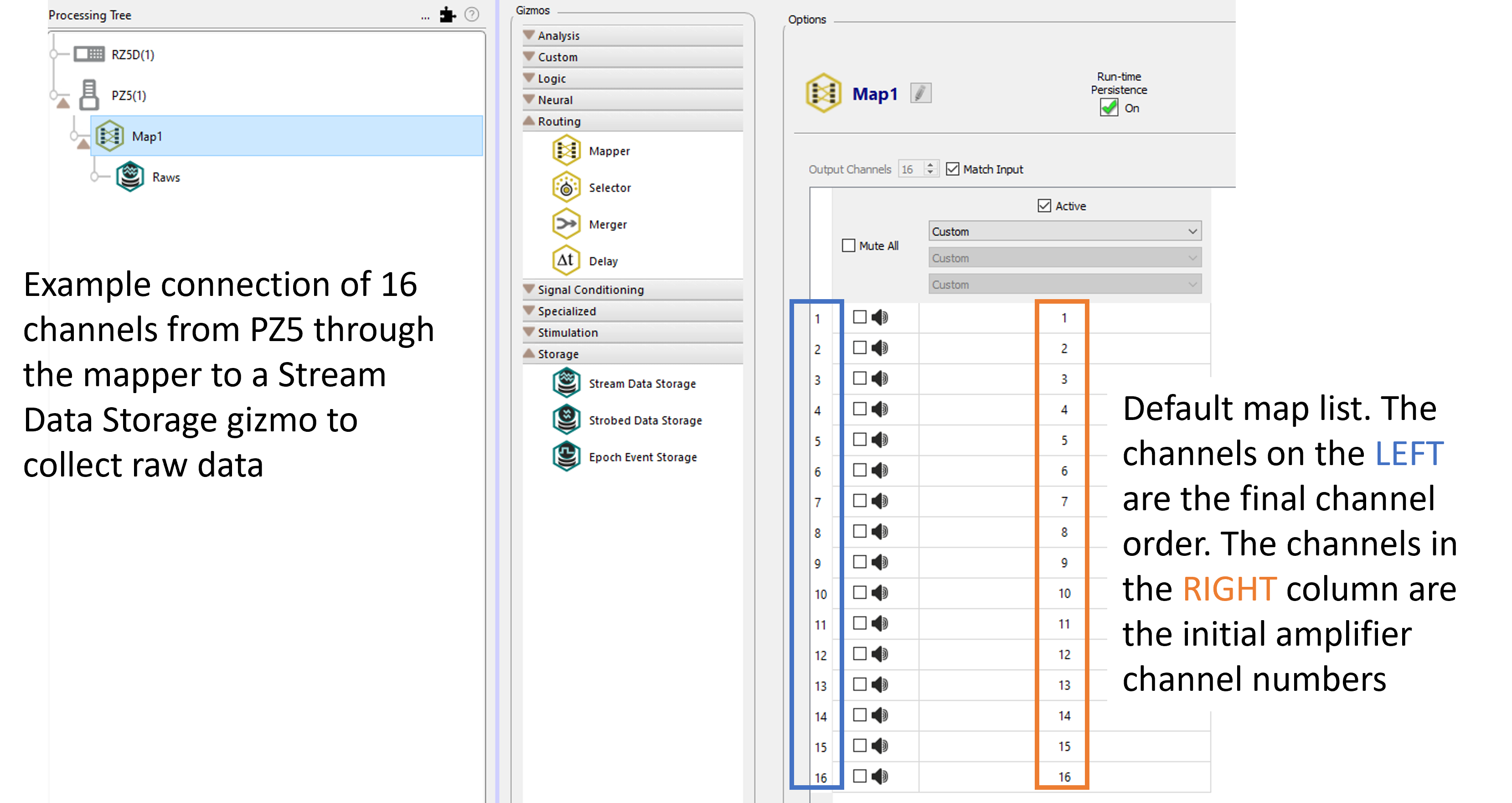
If I wanted to completely flip the order of my channels, I would enter a '16' in row 1, '15' in row 2, etc. Here is a simple example using a tone generator that makes a tone of increasing frequency for every channel in linear order from 1 Hz to 16 Hz.
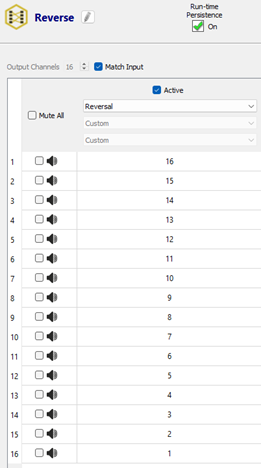
The mapped outcome compared to a raw output is below. You can see the mapper gizmo final map at runtime. Note that the channel colors are for ease of viewing and do not mean anything - pay attention to the sinusoidal frequency for channel identification.
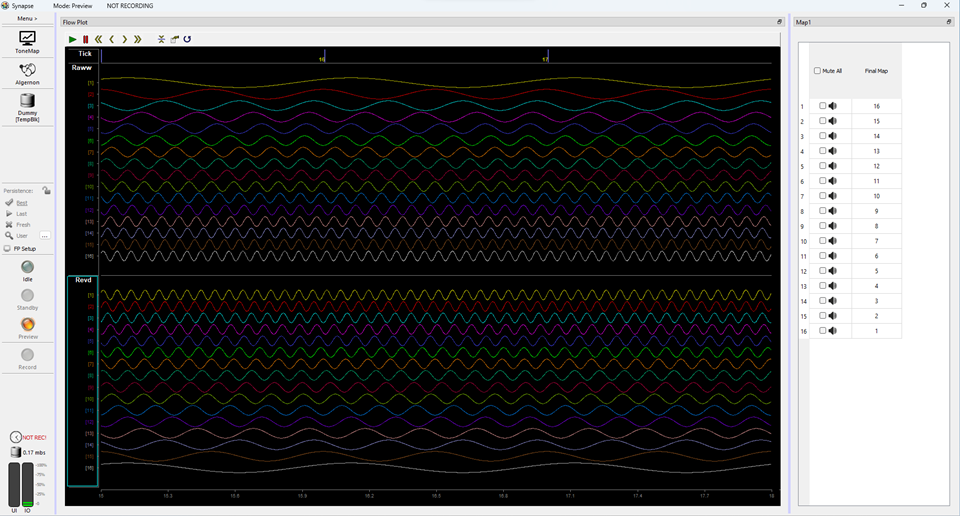
The Final Map
This guide focuses on making a single final map from Tracing a route that you then save and use again later on. One single map column is easier for most people to understand if the entire route is traced and written out.

Saved maps can be accessed from the dropdown menu. The dropdown directory is here C:\TDT\Synapse\MapFiles
You can, however, make a multi-column map instead of a single final map, if you wanted.
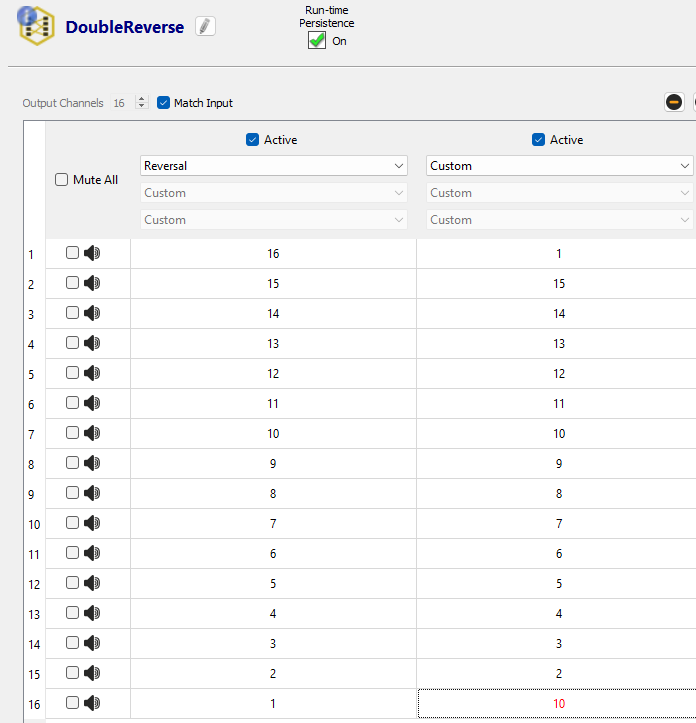
The left hand side is once again the final order, i.e what you want to map everything to. The final map is done by taking each active column from right and following the re-order. In the example, we are double-reversing our tone generator, but with a key difference of swapping 1 Hz for channel 16 and 10 Hz for channel 1. If it was a true double-reverse, we would end up back to the original 1 Hz -> 16 Hz order.
Look at the highlighted 10 in the right-hand column. We are taking the original input from channel 10 (10 Hz) and mapping it to channel 16 by placing it in row 16. Then, in the middle column 'Reversal' we take row 16 and map it to channel 1. Thus, we end up with 10 Hz in channel 1.
Likewise, on the right channel 1 is 1, then we ask channel 16 to be 1, so we end up with 1 Hz on channel 16.
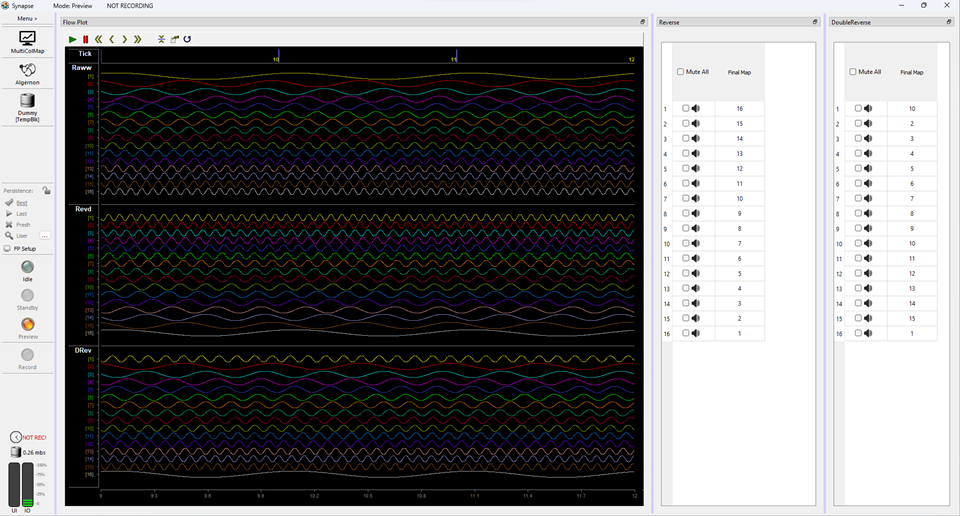
Verify Your Map
The only way to properly verify your map is correct for your probe is to test it. This should be done in vitro with 0.9% NaCl (saline) solution. The saline is your subject. Connect everything the way you would for a normal recording procedure and use a micromanipulator so you can precisely control the depth of your probe.
As you lower the probe into the saline, the channels that get submerged will complete the circuit with the GND screw and become less noisy. This should show you from ventral to dorsal whether you made the map correctly. Here we verify the map made in Electrode Re-Order with Pinout Correction
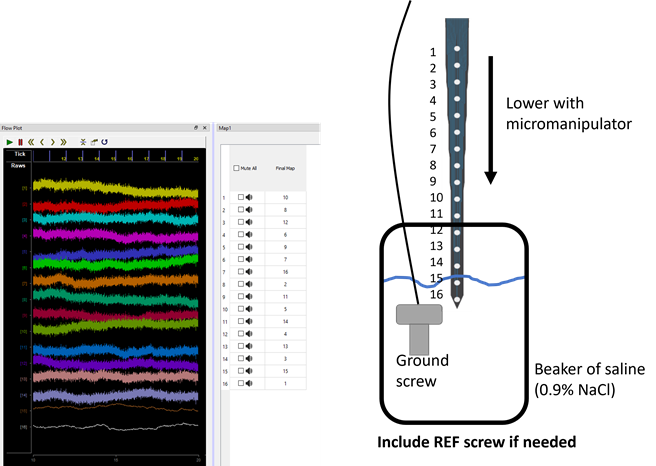
Make sure you have a ground screw and a ref screw (if applicable) in the solution.